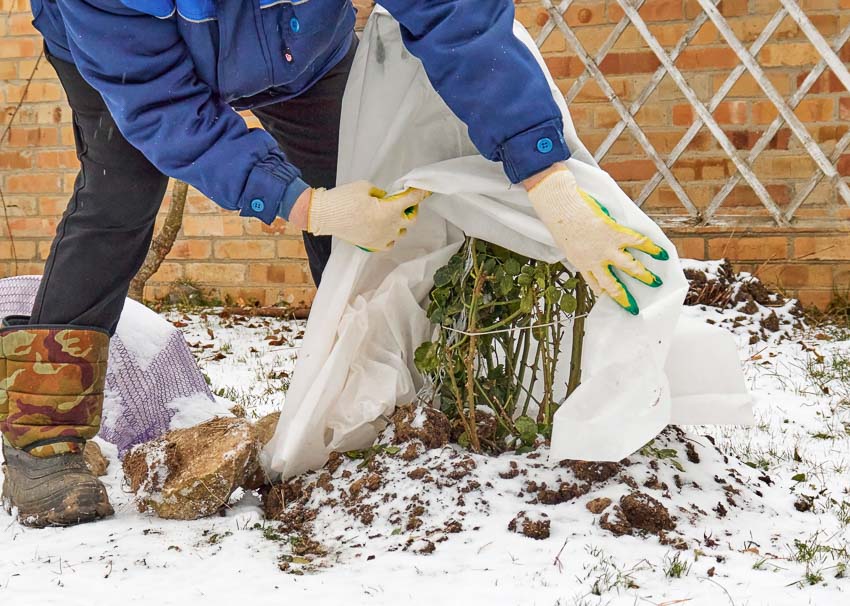As fall turns to winter in the Midwest, many gardeners look forward to a few months of quiet reflection. However, until you put the garden to bed, you have work to do. Discover how preparing your plants for winter in the Midwest will make it easier to get a jump on the growing season when spring arrives.
Why Preparing Plants for Winter in the Midwest is Important
Midwest winters are known for being frigid. However, it’s the freeze-and-thaw cycles brought in by the alternating weather patterns coming in from the north and south that can wreak the most havoc on your garden plants.
The Harsh Realities of the Midwest Winter
Midwest winters can be savagely cold. Furthermore, the humid continental climate can bring plenty of precipitation, usually in the form of snow. Between extreme temperature drops and cold, drying winds, harsh winters can be brutal on your overwintering garden plants.
Temperature Drops and Frost Severity
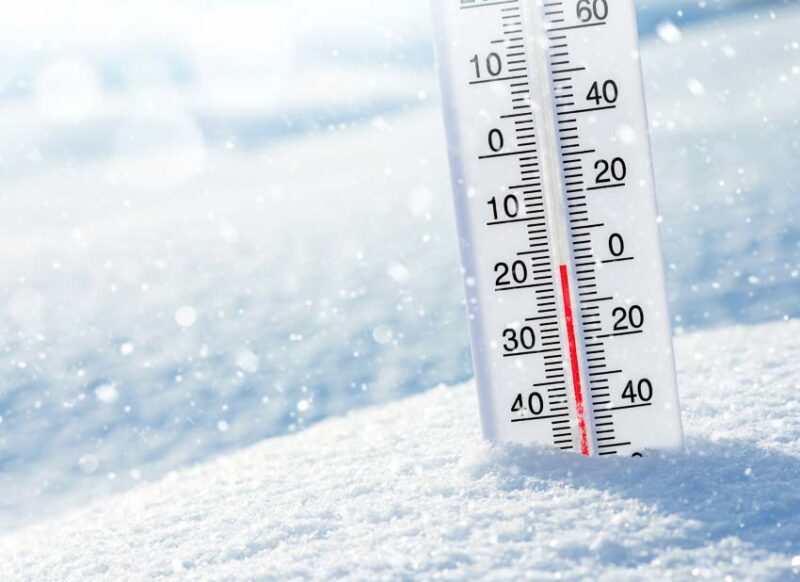
The winter climate in the Midwest is drastically different from the summer. It has record highs and lows that swing more than 140°.
It’s common for temperatures to fall below zero in the Midwestern United States during the coldest months of the year. From December to February, average highs around 29°F (2°C) hit this region. Meanwhile, record lows of -30°F (-34°C) are not uncommon.
Wind Chills and Snowfall Patterns
The humidity that makes the Midwest one of the highest-producing agricultural regions in the world turns to snowfall in the winter. This creates the potential for damage to your overwintering plants.
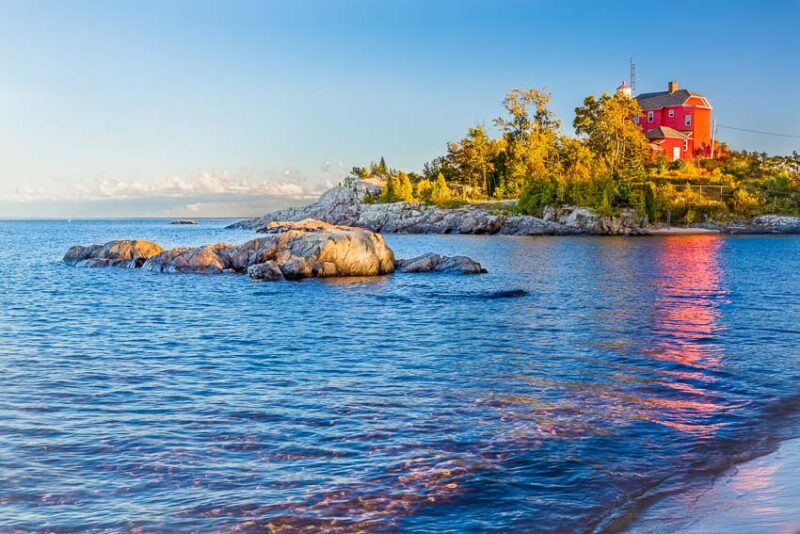
The region near the Great Lakes must also contend with the lake effect. Mainly affecting Michigan, the lake effect results from the cool air flowing over the comparatively warmer Great Lakes, bringing over 200 inches (16.67 feet) of snow annually.
Frigid gusts result in windchill factors, dropping the perceived temperatures to -60°F (-50°C). Unless you protect the plants in your garden, these windchills will freeze-dry them.
The Plant Dormancy Cycle
What happens to plants in the winter? To survive these frigid conditions, plants go dormant during the winter. The dormancy cycle is a natural resting period that protects plants from winter stress and allows them to recover quickly in the spring.
Natural Resting Phase Explained
Plant dormancy is a mechanism that increases a plant’s chances of surviving the winter. It is initiated when the light starts to wane and temperatures drop in the fall. This signals to the plants that it’s time to send their energy reserves to their root systems.
- Deciduous trees and shrubs drop their leaves to prevent loss of moisture and nutrients and protect themselves from blistering cold temperatures in the winter.
- Evergreen trees don’t go completely dormant, but their needles undergo seasonal changes that protect them from desiccation.
- Herbaceous perennials die back, sending all their nutrients and energy reserves to their root crowns.
Some hardy winter annuals, such as kale, enter a period of semi-dormancy and can start to grow again in the spring.
Winter Stress and Recovery Dynamics
Plants that overwinter in the Midwest can adapt to cold temperatures, long dormancy periods, and heavy snowfall. However, under certain conditions, winter stress can shock plants, causing them to struggle to recover in the spring.
Severe winter stress caused by insufficient snow cover and drought conditions will kill plants, sometimes setting them back so much that they struggle to recover in the spring. Even though the plant is dormant, it can lose moisture by way of its bark and roots, leaving it completely desiccated.
Benefits of Preparing Plants for Winter in the Midwest
Fortunately, you can minimize the winter damage to your plants. Discover the benefits of preparing plants for winter in the Midwest.
While you’re here, discover how to prepare your lawn for winter!
Promoting Plant Health and Vigor
Garden prep for winter will ensure your plants’ survival and promote robust spring growth.
Minimizing Winter Damage
The adage that “what doesn’t kill you makes you stronger” doesn’t apply to overwintering plants in the Midwest. Even if your plants survive the brutally cold temperatures and drying winds, winter damage weakens them.
Facilitating Robust Spring Growth
By ensuring that your plants are ready for winter, you’ll make it easier for them to bounce back in the spring. Instead of using their stored nutrients to repair winter damage, they can get a head start and emerge healthy in the spring, ready for a new season.
Aesthetic and Landscape Preservation

Many yard and garden enthusiasts plant trees, shrubs, and perennials to enhance the curb appeal of their homes and maintain the health and beauty of their landscapes. Adequate Midwest garden prep for winter will ensure your garden is attractive all year.
Obviously, landscaping can heighten your home’s curb appeal, but it will also increase its price tag. Explore our tips on ways to improve curb appeal and home value!
Keeping a Pleasing Winter Garden Appearance
Mulching and fall cleanup practices make your plants healthier, and at the same time, preparing flower beds for winter will make your yard more aesthetically pleasing.
Ensuring Lush and Vivid Growth Post-Winter
Winter stress on plants can lead to poor growth in the spring. Trees with dead limbs and damaged bark caused by winter desiccation may eventually snap out of it, but in the meantime, the damage will impact the appearance of your garden.
Cost and Time Efficiency
Garden winter prep can help you lower costs and make better use of your time.
Reducing Replacement and Treatment Expenses
Plants damaged by winter stress are more susceptible to diseases and infections. Many insects are attracted to weakened or injured plants, and it will cost you more time and money to treat them.
The trees, shrubs, and perennials in your yard represent a significant investment. It’s much less costly to adequately prepare flower beds for winter than to replace winterkilled plants in the spring.
Easing Springtime Garden Management
Fall may seem busy, but for most experienced gardeners, it’s a walk in the park compared to spring. Once your garden harvest is in, you can prepare your plants for winter and reduce the amount of work you have to do in the spring.
When the snow starts to melt in the spring, and you see all the work you did in the fall, you’ll thank yourself, and it will allow you to work on other spring projects.
Tips for Preparing Plants for a Midwestern Winter
Winter can be a difficult time for plants, especially in the harsh conditions of a Midwestern winter. There are several methods and techniques to use to put your plants to bed in the fall, including mulching, watering, pruning, and installing protection barriers.
Proper Mulching Techniques
Mulching is one of the best ways to protect your plants from winter damage.
Benefits of Insulation and Moisture Retention
Mulch is often used in the summer to retain moisture in the soil, and it also works for this purpose in the winter. It’s used in the summer to keep the soil cool, and it’s used in the winter for its insulating effect.
While a blanket of snow will insulate your plants, you can’t rely on the ground being covered by snow. Sometimes, a cold snap will hit when there isn’t any snow on the ground, causing extensive winter damage to plants.
Choosing the Right Mulch for Different Plants
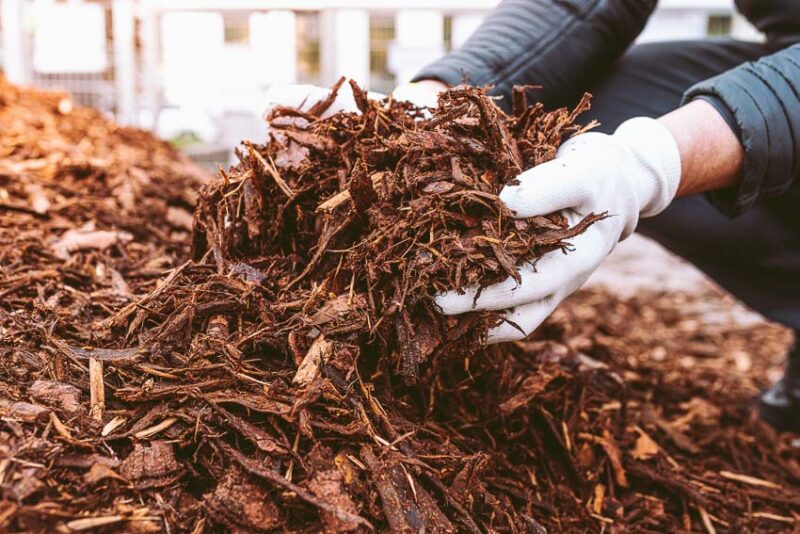
Organic mulch is best for your garden, including compost, wood chips, straw, pine needles, or leaves. However, since mulch can impact the pH of your soil, the best mulch depends on the type of plants you’re growing.
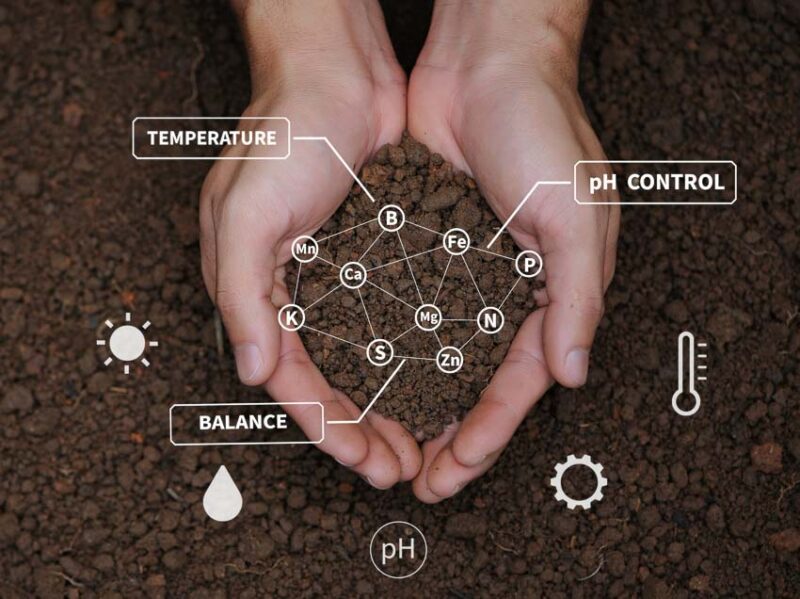
Leaves make excellent mulch, but they can smother some plants by forming a thick, dense mat.
| Plant | Best fall mulch |
| Perennial herbs | Clean straw, pine needles, bark, chopped leaves |
| Roses, hydrangeas, azaleas, and other acid-loving plants | Pine needles, shredded cedar mulch, chopped leaves |
| Fruit trees | Wood chips, pine needles, hardwood leaves, shredded bark, shredded paper |
| Strawberries | Clean straw, corn stalks |
Instead of mulching your garden, use a cover crop for the best no-till garden prep for winter.
Strategic Watering Before the Freeze
Your plants don’t need to be watered as much in the fall. Still, it’s essential to pay attention to the moisture in your soil throughout autumn to ensure your plants are fully hydrated heading into winter.
Speaking of water, protect your lawn and plants. Explore our guide on how to get rid of standing water!
Hydration’s Role in Frost Protection
Once the ground freezes, your plants won’t be able to absorb much moisture until it thaws, which could take several weeks. They must be fully hydrated to withstand the cold, drying winter conditions because they can’t resupply their exposed parts with moisture.
Timing and Depth Recommendations
Keep your lawn and garden watered until the ground is frozen. It’s best to wean your plants from weekly to twice-weekly and then monthly waterings.
The best way to tell if your plants are getting adequate moisture in the fall is to use a soil moisture probe, inserting it about 6 to 8 inches to determine if there is adequate moisture in the root zone.
Plant Protection and Wrapping
There are several ways to protect and wrap your plants to prepare them for winter in the Midwest.
Utilizing Burlap, Cloths, and Plant Covers
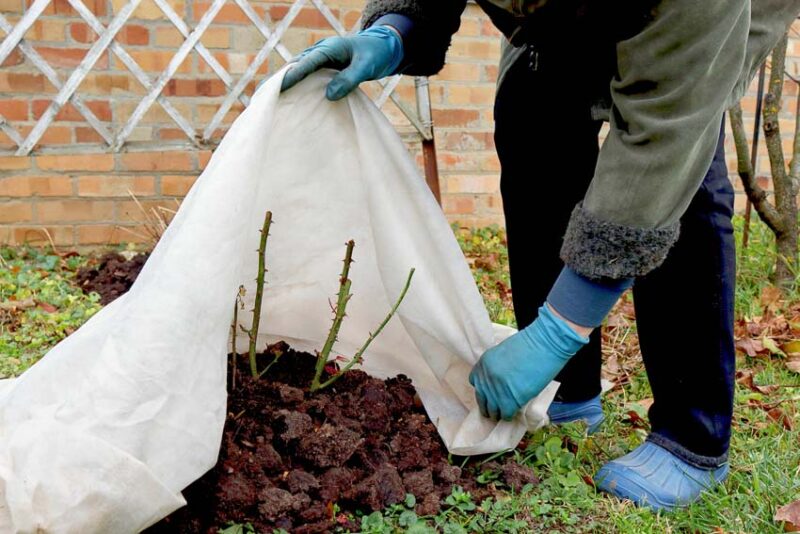
Depending on the type of plant you’re protecting, you can use various materials to wrap them. Evergreen shrubs benefit from plant covers, which you can purchase in various sizes.
Positioning and Securing for Maximum Effect
For the best protection, wrap the trunks of your trees with burlap or cloth. Pipe foam insulation makes a quick and easy wrap for small trees less than one inch in diameter.
You can also create windbreaks by placing stakes in the ground and wrapping burlap cloth between them. It will allow some air movement but will prevent winter burn.
Pruning Essentials Used to Prepare Plants for Winter in the Midwest
Learn more about which plants to prune and why it’s important for ensuring a healthy garden.
Identifying Plants that Need Fall Pruning
Fall pruning is essential for many perennials, but it’s not the best time to prune trees and shrubs. However, you may need to do some fall pruning of your trees to remove dead or diseased limbs.
Best Practices to Encourage Healthy Growth
To encourage healthy growth of perennial plants, ensure that the plant has had time to send the nutrients to its root system. Wait until the foliage has died back.
While most herbs and perennials do better with fall pruning, you’re better off pruning plants like sage, thyme, and rosemary in the spring. Before pruning in the fall, check to make sure that you need to do it.
Explore our guide to checking your tree’s health!
FAQs About Preparing Plants for Winter in the Midwest
How do I know if my plant is cold-hardy enough for the Midwest winter?
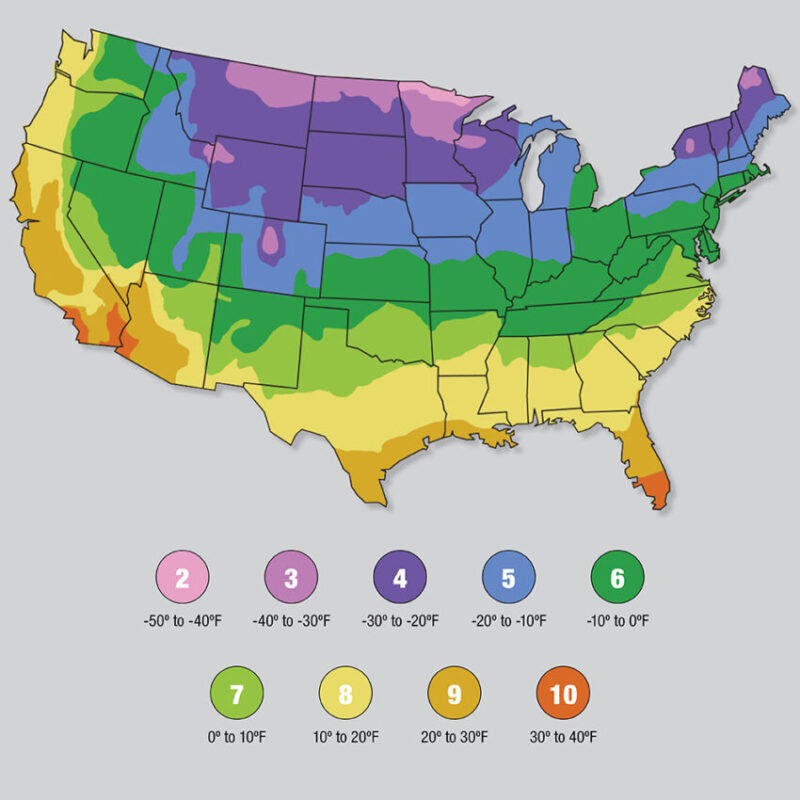
The USDA uses Hardiness Zones to help gardeners determine which plants will survive in their climate region. The easiest way to ensure success with overwintering plants is to choose hardy ones for your region.
Should I move my potted plants indoors?
There are many types of potted plants, and depending on how hardy your plants are, you may be able to move them indoors to keep them alive. Many potted plants are intended to be grown as annuals, and it’s very common to grow them for one season and replant them in the spring.
If you want to keep plants alive, potted houseplants and tender annuals should be moved in before nighttime temperatures fall below 45°F (7°C).
How do I protect my plants from winter wind burns?
Depending on the type of plant, you can protect your trees and shrubs from winter wind burns in a few ways.
- Wrap the trunks with burlap,
- Use an anti-desiccant on evergreens, or
- Create a windbreak using stakes and sheets of burlap.
When is the last ideal time to water plants before winter sets in?
You should stop watering in the fall when soil temperatures fall below 40°F (4°C). Unless there are dry periods exceeding two weeks, you shouldn’t need to water in the winter. However, if the ground is bare and dry, you may need to. In the winter, you should only water during the day when the air temperature is above freezing.
Can I use snow as a natural insulator for plants?
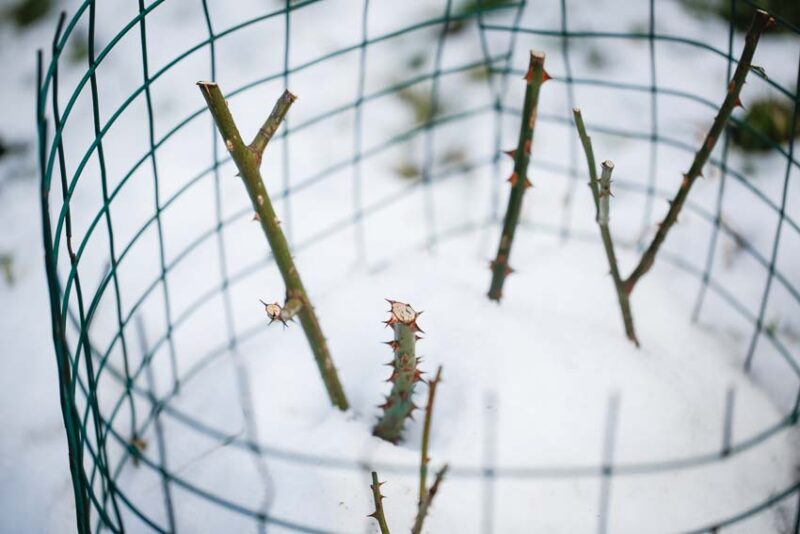
A blanket of snow provides insulation for plants from subzero temperatures and drying winds. Because snow traps air, a thick layer of snow will insulate the soil and keep your plant’s roots from drying out. Snow will keep your plants and trees hydrated and prevent the stored heat in the ground from escaping.

